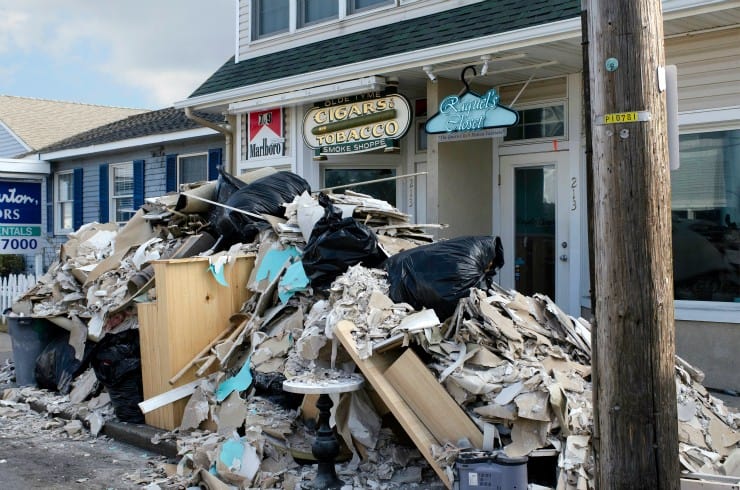El Nino and your business: 5 steps to prepare

El Nino storms are expected to drench much of the nation between December and March.
Weather experts are cautioning small businesses to safeguard their workplaces against potential flooding. The National Oceanic and Atmosphere Association predicts unprecedented rainfall and flooding could hit areas in central and Southern California, across Texas, to Florida and up the East Coast to southern New England.
Want to see how El Nino works? Click here
Consider: When record rainfall and catastrophic flooding hit South Carolina in October, it ravaged small businesses in Columbia and neighboring cities. Most businesses didn’t anticipate the the onslaught — 17 inches in Columbia, up to 27 inches in other parts of the state in just over 24 hours.
A natural disaster such as flooding can lead to a loss of income that forces businesses to shut down. About 40 percent of businesses don’t reopen in the wake of a natural disaster because of exorbitant costs, according to the Federal Emergency Management Agency (FEMA).
Experts recommend these 5 steps to protect your small business and assets from a flood.
1. Assess your risk
As a small business owner, it’s important to determine your chance of flooding. The FEMA website, floodsmart.gov, features a One-Step Flood Risk Profile where businesses can enter their address and determine their flood risk.
2. Consider purchasing flood insurance
If you find your business is in a designated flood risk area, investing in flood insurance can protect you against devastating financial losses. Lindsey Hart, spokesperson at the California Department of Insurance, says flood insurance is only available through the National Flood Insurance Program (NFIP).
“Even a couple inches of water can cause thousands of dollars of damage,” Hart says. “Typically there’s a 30-day waiting period from date of purchase before the policy goes into effect, so it’s wise to buy a plan before the winter storms hit.”
See also: 6 tips on how to shop for flood insurance
Having an insurance policy can also help small businesses to financially stay afloat. Between 2010 to 2014, the NFIP estimated the average commercial flood claim was nearly $89,000.
For commercial structures, the NFIP maximum flood insurance policy is $500,000. If more insurance is needed, small business owners are encouraged to talk to their agent about surplus lines coverage. Flood insurance covers physical damage to your property and most possessions, but it’s important to check with your insurance agent to see specifically what your plan covers.
3. Document your inventory
Experts also recommend that small businesses prepare for floods by using their smart phone to do a business inventory and document their belongings, then store this information in their cloud for easy access after a storm
4. Take steps to prevent flood damage
If your business is in an area at high risk of flooding, check with your city’s public works department about obtaining sandbags. Many cities offer free sandbags, which, when properly filled and placed, can reduce the impact of water entering your business.
When it comes to flooding, Tim Reinhold, senior vice president of research and chief engineer for the Insurance Institute for Business and Home Safety (IBHS) in New York, recommends taking steps to ensure your small business is protected from water entry and to identify sources of any water flows or leakage.
He encourages businesses to check out the IBHS flood toolkit at disastersafety.org/ibhs-risk-flood/ for tips on specific improvement projects that can help protect against flood damage.
5. Have a Disaster Recovery Plan
In South Carolina, many small businesses felt the impact of flooding, despite avoiding any damage. Road closures due to flooding may affect your customers’ and employees’ ability to reach your workplace.
“It’s important for small businesses to have a plan that addresses how to protect both their facilities and finances in the event of a flood or other natural disaster,” says Tiffany O’ Shea, director of public affairs for the IBHS.
Find more resources
IBHS recently joined with the Insurance Information Institute to prepare an infographic that outlines the steps that small businesses need to take to prepare for a flood or other natural disaster.
The American Red Cross and the U.S. Small Business Administration, also offer assessments and resources to help small businesses develop the right plan of action in case of a flood or other natural disaster. Recommendations include addressing issues such as having off-site storage for any critical business data so that your business can continue operating in a remote location.
The National Federation of Small Businesses also offers a comprehensive website to help businesses plan for and recover from a flood or other disaster.
See also: Do I need small business insurance (video)